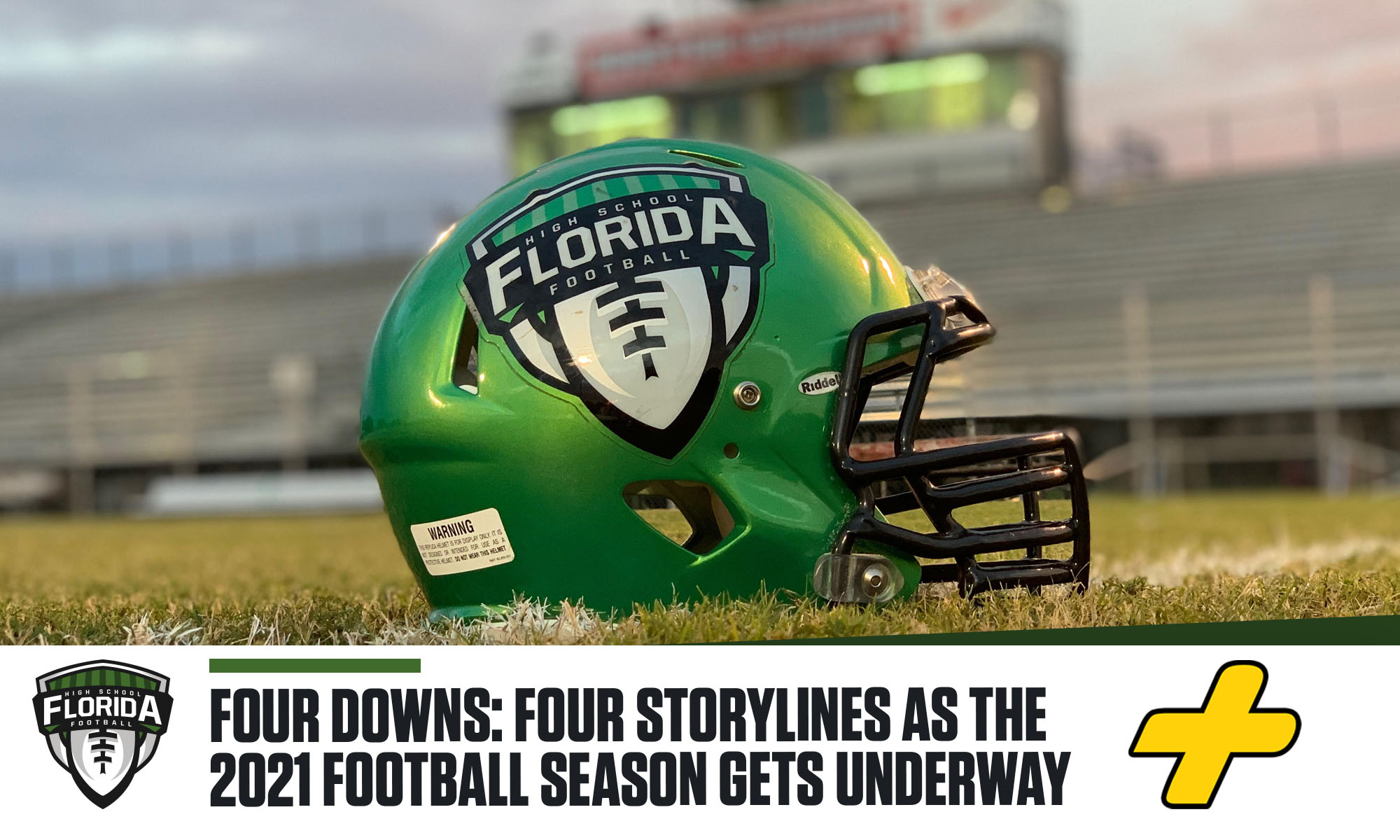The 2021 high school football season has arrived with the start of the first practices of the season taking place around the state.
And before long teams will be taking the field under the lights in having a sense of normalcy.
Here is a look at four storylines as we get the 2021 season underway.
FIRST DOWN: The transition from 2020 to 2021
This will be a transition like no other in high school football history for coaches, players, and teams alike.
After coming off the 2020 season, playing in the middle of the COVID-19 pandemic, a sense of normalcy has developed over the high school football landscape. This comes after some teams got a full schedule in while other teams around the state struggled to get five games in, all with various counties starting their season up various times last year.
In already speaking to coaches at several media day events around the state, one clear takeaway at this point is that a lot of lessons were learned from the 2020 season from all the steps taken to make the game safe for playing to not taking the game of football for granted because it can be taken away at any moment.
There is still a concern from coaches that some games could end up in a plug-and-play situation due to COVID-19 protocols regarding contract tracing that could come into play once again this season. However, at this point, everything is a go for the 2021 season to be played in full.
SECOND DOWN: One-year classification
This year will be a one-year deal when it comes to FHSAA classifications with the district and region alignments in all eight classifications after the FHSAA released the new districts and classifications in March of this year.
The new alignments give teams a different depth of talent as a lot of teams take on new districts or regions and some even with being in a different classification than the last two years.
The big thing to note is the plan, which was approved by the FHSAA board of directors is to bring back a two-year cycle for classifications and districts starting for the 2022-2023 school year. With that in mind, it will put Florida on the same realignment schedule with the neighboring states of Georgia and Alabama, which reclassify their schools on even year cycles.
THIRD DOWN: RPI is returning
The Rating Percentage Index, more commonly referred to as the RPI is returning this season as the FHSAA’s method of seeding playoff brackets in all eight classifications.
After last year’s playoff structure where any team that opted into the FHSAA state series was granted a playoff berth, this year it will back to the structure that was in place during the 2019 season.
First, in Classes 5A-8A, four district champions and four at-large berths will be given to each of the four regions in each classification. The four district champions will be seeded upon based on their final RPI ranking of the regular season and then the four at-large berths will be determined from the remaining highest RPI rankings for that region.
In Classes 1A-4A, six teams in each of the four regions will be given at-large berths from the teams with the highest final RPI rankings of the regular season. The top two highest seeded teams will be awarded a first-round bye in the regional quarterfinals round of the FHSAA State Series.
For those looking to remember what the formula for the RPI is, it is 35% based on your own record, 35% based upon your opponents’ record, and 30% based on your opponents’ opponents record.
It should be expected based upon past experiences with the FHSAA that we would see the first RPI rankings of the season after Week 5 or Week 6.
FOURTH DOWN: Sunshine State Athletic Conference sees growth and changes
The Sunshine State Athletic Conference, better known as the SSAC has had a busy off-season with changes being made between eliminating divisions in its 11-man league to expand the North Florida League.
First, the Sunshine State Athletic Conference expanded its North Florida League to include more teams, bringing up to 19 teams in the league across the Panhandle to North Central Florida. The teams will be split into two divisions and will have a North Florida League playoff between the two divisions in Weeks 10 and 11. The final seeding will be determined using a MaxPreps power ranking.
Over in the 11-man Division, the SSAC has eliminated division going forward after seeing success using MaxPreps power rankings to seed the teams for its playoff brackets as an answer of how to have a playoff last season. With this move, that means teams got more freedom to choose how they schedule their 8 games for the regular season portion of the schedule before heading into the playoffs in Week 10.
And last, but not least, the SSAC’s 8-man Division has grown to a five-division league that is seeing some new teams move over from FCAPPS who has supported 6-man and 8-man football in the Sunshine State for many years. The growth of the 8-man Division has been something the SSAC has been working on since announcing the 8-man Division after the 2019 football season.



















![Robby Pruitt stepped down at Williston after four seasons. Could he be heading back to Union County for a second stint? [FloridaHSFootball.com]](https://floridahsfootball.com/wp-content/uploads/2025/12/Pruitt-Williston-Featured-120x86.jpg)


![Dr. Joaquin Garcia captured the 2025 FHSAA FIT 4A-7A Championship on Thu. Dec. 4, 2025 at H.G. Morse Stadium at The Villages High School in Middleton, Fla. [Joshua Wilson/FloridaHSFootball.com]](https://floridahsfootball.com/wp-content/uploads/2025/12/Dr.-Joaquin-Garcia-Tate-FIT-4A-7A-Featured-120x86.jpg)
![Dunnellon won the 2025 FIT 1A-3A Championship on Thu. Dec. 4, 2025 at The H.G. Morse Stadium at The Villages High School in Middleton, Fla. [Joshua Wilson/FloridaHSFootball.com]](https://floridahsfootball.com/wp-content/uploads/2025/12/Dunnellon-NMB-FIT-1A-3A-Featured-120x86.jpg)